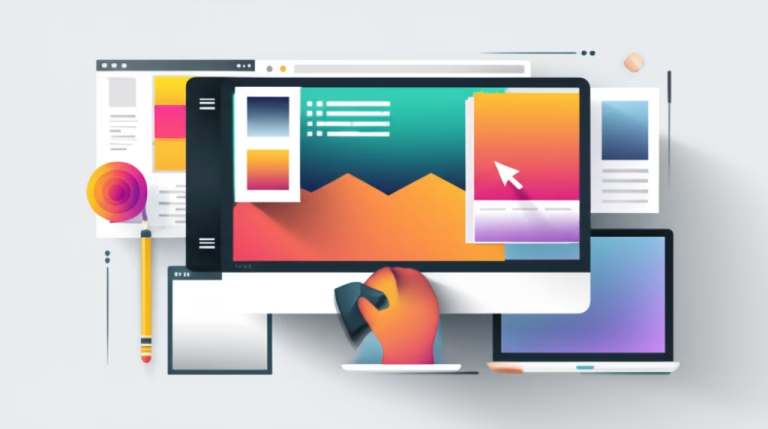The Challenge Every Designer Faces
So, you’re diving into the exciting world of design! You’ve learned some skills, maybe created a few cool projects, but now you hit a common roadblock: how do you show potential clients or employers what you can do? It feels like you need experience to get a job, but you need a job to get experience. It’s a classic design puzzle!
This is where your personal showcase comes in. It’s not just a folder of pictures; it’s your professional story, told through your work. Mastering this is key to unlocking opportunities and showing the world your unique creative voice. Let’s break down how to build this essential tool.
Table of Contents
The Science Behind a Winning Portfolio
Think of your design portfolio not just as a collection, but as a curated exhibition of your best pieces. It’s designed to make a powerful first impression, build trust, and communicate your skills and approach clearly and quickly. It leverages psychology by providing tangible proof of your abilities beyond just listing skills on a resume.
It works because people are visual. They want to see what you’ve created. A well-crafted portfolio tells a story about your problem-solving process and creativity, acting as a visual resume that speaks volumes about your potential and professionalism. It’s how you demonstrate value and stand out from the crowd.
Fundamental Principles
Curation: This means selecting only your absolute best work. More is not always better. Choose projects that showcase your skills, align with the type of work you want to do, and demonstrate your ability to solve problems through design. Think quality over quantity.
Storytelling: Don’t just show the final piece. Explain the journey. What was the challenge? How did you approach it? What were your decisions and why? Showing your process, from initial idea to final result, gives context and highlights your thinking and problem-solving skills.
Presentation: How you present your work matters just as much as the work itself. Make it easy to view, understand, and navigate. High-quality images, clear descriptions, and a clean layout are crucial. Whether it’s a website or a PDF, make it professional and user-friendly.
Practical Strategies for Your Portfolio
- Define Your Niche & Goals:
When to use: Right at the start of building your portfolio.
How to apply: Think about the kind of design work you want to attract. Are you interested in branding, web design, illustration, or something else? Tailor your portfolio content and presentation to appeal to that specific audience or industry. - Select Your Strongest Projects:
When to use: After defining your goals and gathering potential pieces.
How to apply: Review all your work and pick the projects you are most proud of, the ones that best represent your skills and potential. Include a variety if you have different strengths, but ensure each piece is truly excellent. - Show Your Process & Rationale:
When to use: When preparing individual project case studies.
How to apply: For each selected project, create a brief write-up or visual breakdown. Include sketches, wireframes, mood boards, or explanations of your design choices. This shows your thinking and problem-solving abilities, not just the final output. - Optimize for Easy Navigation:
When to use: When structuring your online or offline portfolio.
How to apply: Organize your projects logically. Use clear headings, categories, and simple navigation menus if it’s a website. Ensure images load quickly and contact information is easy to find. Make it effortless for viewers to see your work.
Real Cases: When Portfolios Go Wrong
Learning from mistakes is a fast track to improvement. Let’s look at some common missteps beginner designers make with their portfolios so you can avoid them.
Case 1: Too Many Projects with Inconsistent Quality
Problem: A designer includes every project they’ve ever done, from school assignments to small favors for friends. The quality varies greatly, and the sheer volume is overwhelming.
Lesson: Recruiters and clients are busy. They won’t sift through dozens of mediocre projects. A few outstanding pieces are far more impactful than a large collection of average ones. Be ruthless in your selection; only showcase your very best work.
Case 2: Projects Shown Without Context or Explanation
Problem: The portfolio is just a gallery of final images. There’s no description of the project’s goal, the designer’s role, the challenges faced, or the thinking behind the design choices.
Lesson: Design is about solving problems. Without explaining the problem and your solution, viewers only see the aesthetic result, not your strategic thinking. Always provide context and tell the story of each project. What was the brief? What problem did you solve? What was the outcome?
Your Action Plan for Building Your Portfolio
Ready to turn your work into opportunity? Here’s a simple plan to get your portfolio off the ground and growing.
- Today:
Gather all your design projects, big or small, professional or personal. Put them all in one place so you can see everything you’ve created. Don’t filter yet; just collect. - This Week:
Review your collected work. Based on the type of design you want to do, select your top 5-10 projects that best represent your skills and potential. These are the pieces that will form the core of your portfolio. - This Month:
For each selected project, develop a case study. Write down the project’s objective, your role, the process you followed, the decisions you made, and the final outcome. Gather any supporting visuals like sketches or wireframes. - Next 3 Months:
Choose a platform (like a simple website builder, Behance, or even a well-designed PDF). Build your portfolio using your selected projects and case studies. Get feedback from peers or mentors. Refine and launch it!
Clear Your Doubts about Portfolios
Starting out can bring up questions. Here are answers to some common ones about building your design portfolio.
Q: What if I don’t have professional projects yet?
A: That’s totally fine! Use personal projects, passion projects, self-initiated concepts, redesigns of existing brands, or work from volunteer projects or school assignments. Focus on demonstrating your skills and process.
Q: How many projects should I include in my portfolio?
A: Quality over quantity is key. Aim for 5-10 strong, well-presented projects. It’s better to have a few excellent case studies than many average ones. Make sure they are relevant to the type of work you seek.
Q: Should my portfolio be a website or a PDF?
A: An online portfolio (website or platform like Behance) is generally preferred for its accessibility and searchability. A well-designed PDF can be useful for specific applications or when requested, especially if tailored to a specific job.
The Next Step in Your Journey
Your design portfolio is a living document. It should evolve as you grow and gain new experiences. Keep adding your best new work and refining how you present it. It’s your most powerful tool for showing the world your talent and landing exciting design opportunities.



